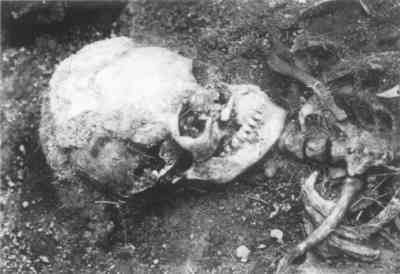THE ETHICAL DILEMMA FACING CONSERVATION: CARE AND TREATMENT OF HUMAN SKELETAL REMAINS AND MORTUARY OBJECTSGAYS S. McGOWAN, & CHERYL J. LaROCHE
3 ARCHAEOLOGY AND PHYSICAL ANTHROPOLOGYWithin archaeology and physical anthropology, there is a similar tendency to disregard the metaphysical as the data inherent in human remains become paramount (fig. 4)(GSA 1993; Cook 1993; Echo-Hawk and Echo-Hawk 1994).
Within physical anthropology and natural history, Aleš Hrdlička, the first curator of physical anthropology at the United States National Museum (Blakey 1987), codified the early treatment of modern skeletal collections and outlined the scope and aims of physical anthropology. His original intent was to make available for study within the National Museum the broadest possible collection of human skeletal remains in order to advance the study of differences among the world's races (Stewart 1940). Physical anthropology, he stated, was intended to have practical application through racial eugenics (Blakey 1987). Yet the treatment of human remains is an evolving topic, subject to updated and revised philosophies. In recent times groups outside the scientific establishment (Robinson et al. 1985) have been demanding greater sensitivity to and respect for the sacred values of their ancestral cultural heritage, leaving many historic collections and much of physical anthropology and archaeology in disarray. Repatriation legislation, which is an outgrowth of these demands, recognizes that scientific rights of inquiry do not automatically take precedence over religious and cultural beliefs (Monroe and Echo-Hawk 1991). Demands for the reburial of skeletal and cultural remains, particularly those of Native Americans, is considered an expression of greater sensitivity and respect for the dead. In 1981 Dr. William Bass, noted physical anthropologist, stated, “From the viewpoint of a skeletal biologist [reburial] is similar to burning the books in our libraries” (Bass 1981). Bass's attitude is in direct opposition to the Native American belief that “respect for the |
